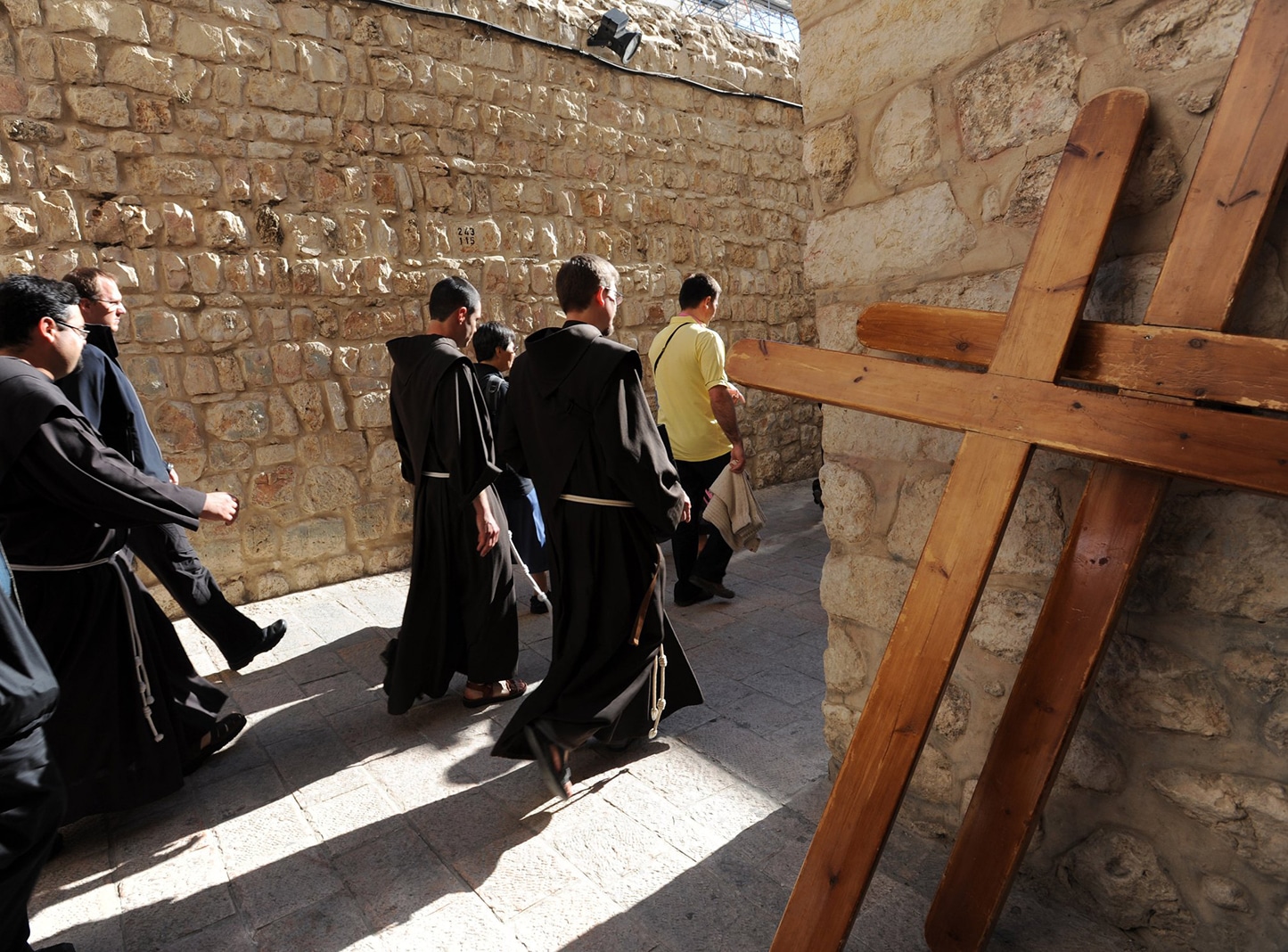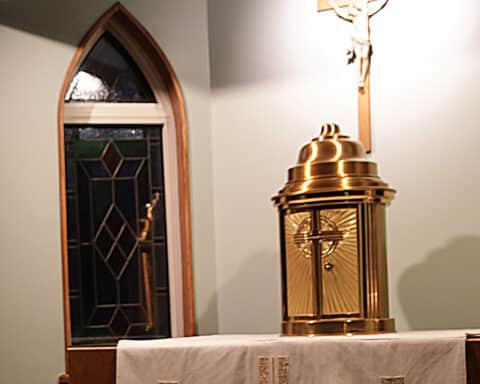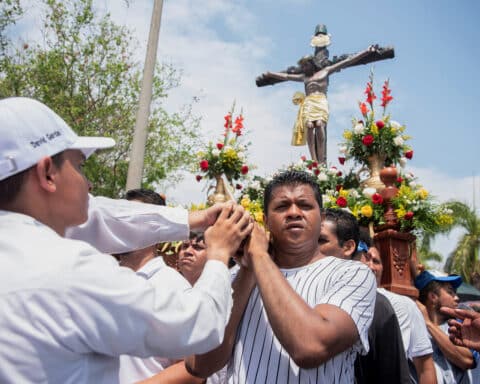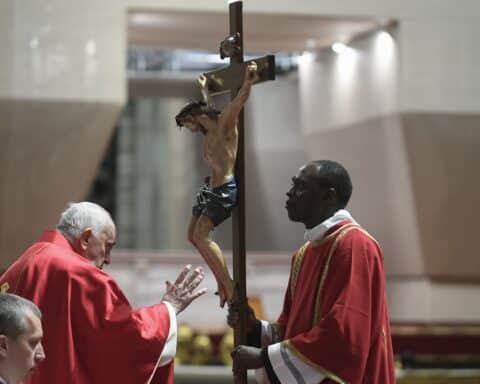Nearly every Catholic church depicts the 14 Stations of the Cross — moments of Jesus’ passion and death on the cross — so that the faithful can pray and reflect on them. Now, Catholics worldwide can also pray the stations while seeing, through video, where tradition says they actually happened.
The Christian Media Center (CMC), a communication service of the Custody of the Holy Land, recently published a video of the Franciscan friars of the Custody of the Holy Land praying the Stations of the Cross, also known as the Way of the Cross or Via Crucis, in the Via Dolorosa (“Sorrowful Way”).
The path weaving through the streets of the Old City of Jerusalem is believed to be the same path Jesus walked to his crucifixion.
“Every Holy Place here can make the Scriptures come to life,” Cristiano Assunçāo, director of the CMC, told Our Sunday Visitor. “I would say that it is a spiritual journey, a way for conversion, to be close to Jesus.”
Viewers worldwide can participate in this experience remotely and follow the friars as they pray the stations in Italian, English and Arabic at 14 locations: (1) Jesus is condemned to death; (2) Jesus carries the cross; (3) Jesus falls for the first time; (4) Jesus meets his mother; (5) Simon helps Jesus carry the cross; (6) Veronica wipes the face of Jesus; (7) Jesus falls the second time; (8) Jesus meets the women of Jerusalem; (9) Jesus falls the third time; (10) Jesus is stripped of his garments; (11) Jesus is nailed to the cross; (12) Jesus dies on the cross; (13) Jesus is taken down from the cross; and (14) Jesus is laid in the tomb.
Assunçāo shared that the Franciscans walk through the Via Dolorosa every Friday (at 3 p.m. in the winter and 4 p.m. in the summer). Following a centuries-old tradition, the friars and those who join them pray at and reflect on each station.
The impact of the war
The ongoing Israel-Hamas war, Assunçāo revealed, impacts the number of people who gather.
“On normal days, the Friars are accompanied by the faithful, local Christians and pilgrims,” he said. “Sadly, since the war started few people could join, and what once were a gathering of hundreds of people, filling all the narrow streets of the Holy City, [is] now just the Franciscans and few religious.”
While part of the CMC’s mission is to make the Stations of the Cross accessible during Lent so that people worldwide can watch and pray, they especially wanted to share a video this year because pilgrims are unable to attend in person due to the war, Assunçāo said.
The Custody of the Holy Land, through the Stations of the Cross, he added, prays for the pope’s intentions, for the benefactors of the Holy Land, and for peace in the world and in the Holy Land.
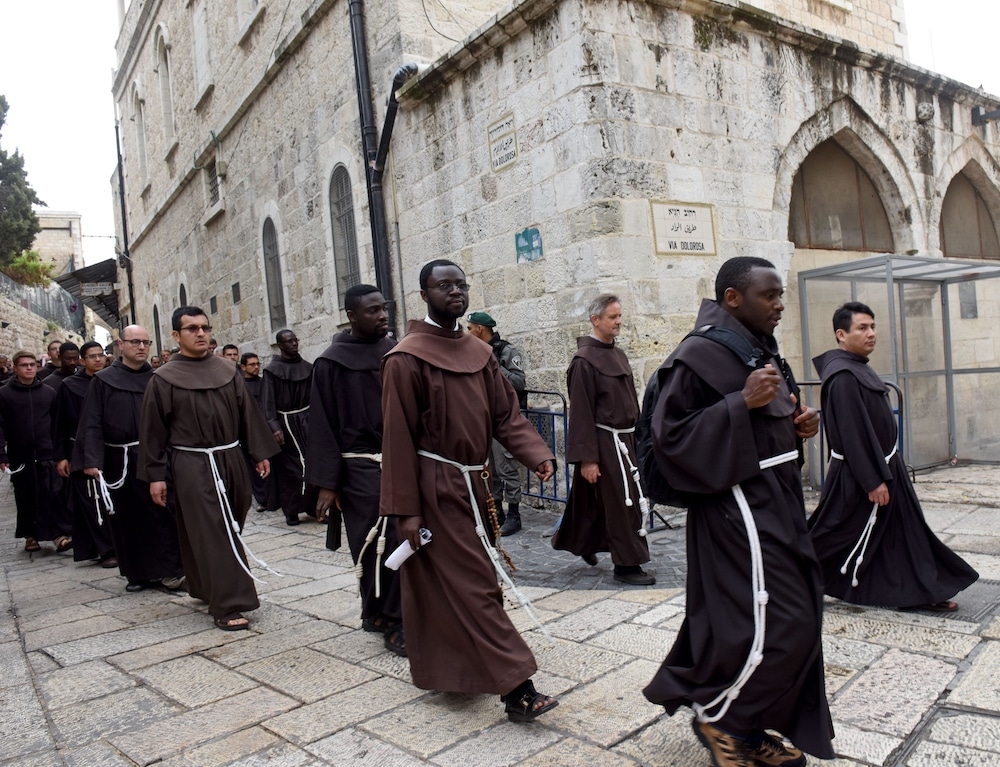
A special prayer
In the Holy Land, the Stations of the Cross are rich in meditations of the stations, Assunçāo said. Even the walk between the stations, he described, is filled with prayers and songs in Latin and sometimes other languages including Arabic, English and Italian.
Praying the stations here, he explained, is different from praying them anywhere else.
“Something unique here that we don’t find anywhere else are the veneration of the places where those events took place,” Assunçāo emphasized. “The Franciscans that are the custodians before contemplating each station of the Cross, say in latin ‘HIC,’ that means, ‘HERE.'”
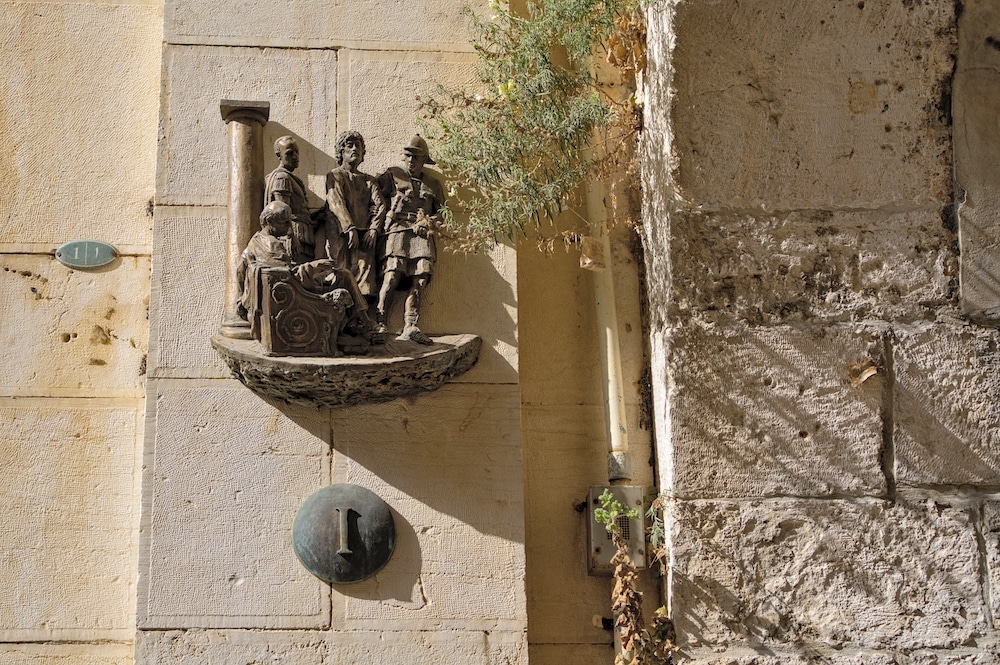
For example, the first station, “Jesus is condemned to death,” becomes “Here Jesus is condemned to death” in the Via Dolorosa.
Assunçāo described the environment surrounding the stations.
“Some could find it strange when they follow the Way of the Cross for the first time, with all the noise, the [open markets], people in the stores offering to buy stuff, or the song of prayer from the Muslims ‘the muezzin’ coming out loud from the speakers of the minarets,” he said.
In the time of Jesus, he suggested, the sights and sounds may have been similar.
“[B]ut once you are here with the intention to pray and to bring yourself to that very moment and unite your soul with the last moments of the life of Jesus and walk with him for the Via Dolorosa,” he added, “there is nothing that can distract you.”
A look at history
The format of the 14 stations, from the pretorium of Pontius Pilate to the Church of the Holy Sepulchre, comes from Brother Elzear Horn, OFM, who lived in Jerusalem from 1724-44, he said.
“The significance is not about keeping the tradition but [remembering] the fact that Jesus walked through the streets of Jerusalem and on his shoulders he was carrying the cross for our sins, and he carried it to completion, to his death in the Golgota, and from there he was laid down in the Holy Sepulcher,” Assunçāo described.
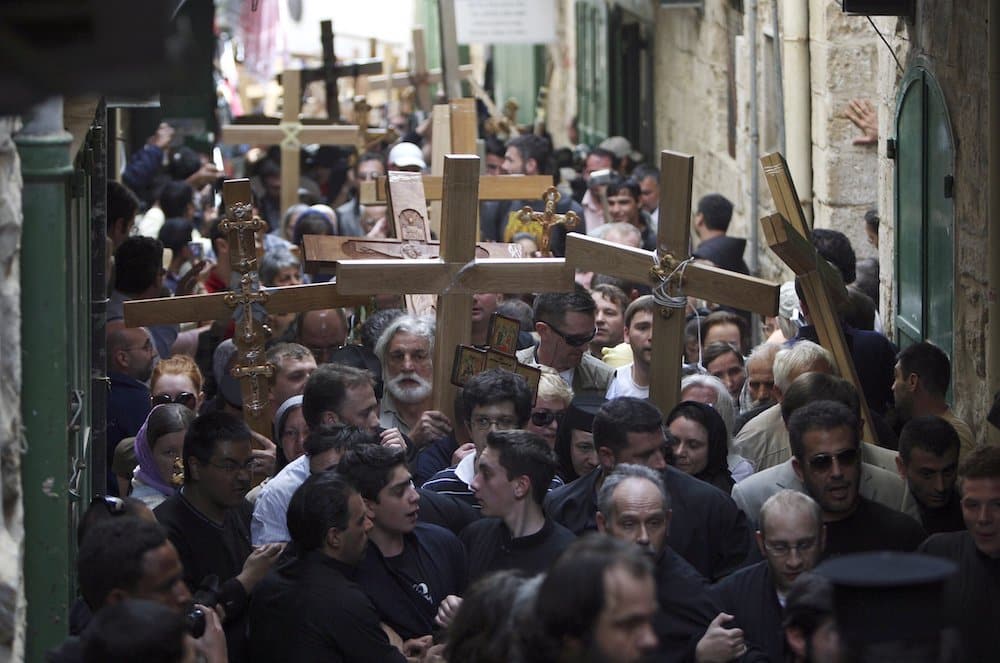
The stations do not conclude with Jesus’ death. Instead, he said, “the Via Dolorosa finishes with the proclamation in front of the Tomb of the Holy Sepulcher ‘HIC SURREXIT DOMINUS VERE,'” meaning, “Here the Lord is risen indeed.”

